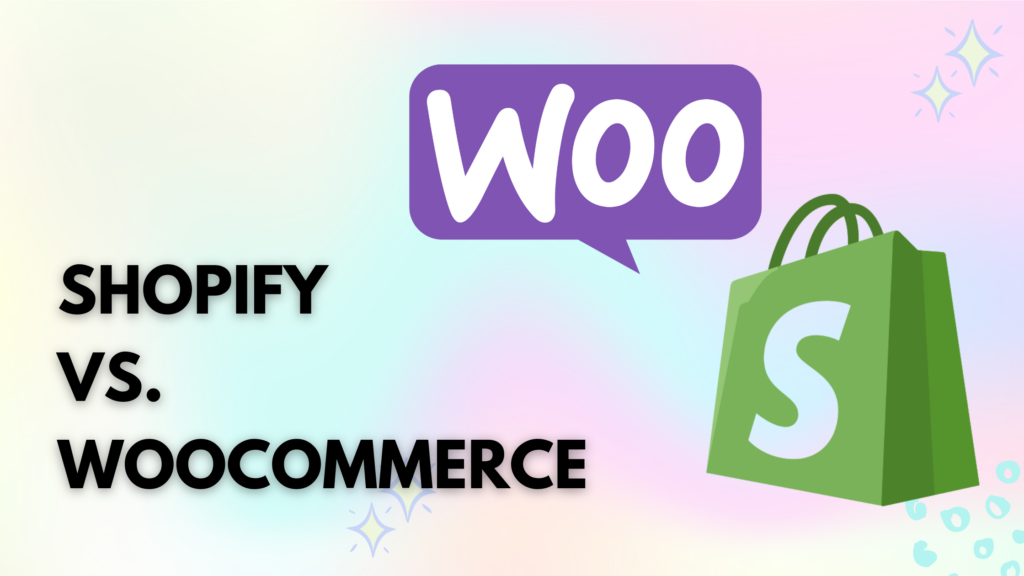Shopify vs. WooCommerce – Which is Best in 2025?
In the evolving landscape of ecommerce, the decision of whether to utilize Shopify or WooCommerce for one’s online store has become a pivotal consideration for entrepreneurs and business owners aiming for success in 2025. Both platforms offer a suite of powerful tools and features designed to facilitate the creation and scaling of an online business, but they cater to different needs, preferences, and skill levels. The comparison between Shopify vs WooCommerce is not just about choosing an ecommerce platform; it’s about selecting a foundation that aligns with one’s business objectives, technical capacity, and growth aspirations. This choice can significantly impact the operational efficiency, customer experience, and ultimately, the profitability of the online venture.
This article will thoroughly examine the key areas of comparison between Shopify and WooCommerce, providing a clear and detailed insight into the ease of use and user experience, pricing and value for money, and performance and scalability offered by each platform. By dissecting these critical aspects, businesses will be able to make an informed decision regarding which platform is best suited to their specific needs in 2025. The aim is to present an impartial overview that highlights the pros and cons of each option, equipping readers with the knowledge to confidently choose the right ecommerce solution for their ventures.
Overview of Shopify and WooCommerce
Shopify, established as a comprehensive ecommerce solution, simplifies the launch and management of online stores. It’s a fully hosted platform that eliminates the need for users to worry about technical aspects such as web hosting and security. Known for its user-friendliness, Shopify offers a variety of customizable themes and built-in features, making it ideal for entrepreneurs without technical expertise. It supports a range of payment options and provides robust customer support.
Conversely, WooCommerce is an open-source plugin for WordPress, allowing detailed customization but requiring some technical know-how. It leverages WordPress’s powerful features to offer extensive flexibility and control over every aspect of an online store. WooCommerce’s integration with WordPress makes it highly popular, with a vast range of themes and plugins available, enhancing its functionality and scalability based on the hosting provider chosen. This platform is particularly favored for its SEO capabilities and the supportive community that accompanies WordPress users.
Ease of Use and User Experience
Shopify stands out for its user-friendly setup process, requiring only a few clicks to install and configure a fully functional ecommerce store. This simplicity makes it ideal for those without technical expertise. The platform’s dashboard is intuitive, guiding users through each step from product addition to theme customization. Moreover, if you’re looking to cater to B2B customers, the Shopify wholesale solutions provide built-in apps and integrations tailored for bulk ordering and pricing strategies, streamlining your operations effortlessly. In contrast, WooCommerce demands more technical knowledge, especially during the initial setup which involves multiple steps such as installing WordPress and configuring the WooCommerce plugin.
In terms of customization, Shopify offers a range of themes and built-in features that are straightforward to use, thanks to its drag-and-drop editor. However, it may impose limitations for those seeking highly unique or advanced design modifications. WooCommerce, on the other hand, provides extensive customization options through the vast ecosystem of WordPress plugins, catering to users who require detailed control over their store’s design and functionality. This open-source flexibility, however, comes with a steeper learning curve and potentially increased complexity in managing the store.
Pricing and Value for Money
Shopify offers a range of subscription plans tailored to different business sizes, with costs varying from $9 to $299 per month. These plans encompass essential ecommerce features, but additional costs for premium themes and apps can accumulate. Shopify also imposes transaction fees if third-party payment systems are used, potentially increasing overall expenses. If you’re trying to weigh these costs against selling on other major platforms like Amazon, understanding how Shopify compares with Amazon can offer further insight into where your business may thrive.
Conversely, WooCommerce provides a cost-effective initial setup with its free core plugin. However, the total cost of ownership can rise due to the need for paid themes, plugins, and extensions necessary for operational functionality. Hosting and domain fees add to the ongoing expenses, making it crucial for businesses to consider long-term costs associated with extensive customization and potential scalability needs.
Both platforms offer distinct pricing structures and associated costs, making it essential for businesses to evaluate their specific requirements and budget constraints to determine the most cost-effective and value-driven solution for their ecommerce operations.
Performance and Scalability
Shopify and WooCommerce both offer robust solutions for ecommerce scalability and performance, but they cater to different needs. Shopify provides an all-in-one hosted solution, ensuring high reliability and speed, which is crucial for enhancing user experience and boosting sales. It is particularly beneficial for businesses that expect rapid growth, as it can seamlessly handle increased traffic and transactions without requiring manual intervention for upgrades.
On the other hand, WooCommerce, with its flexible open-source nature, requires a more hands-on approach to achieve optimal performance. It allows for extensive customization through plugins and themes, which can be tailored to specific business needs. However, its performance heavily depends on the hosting provider chosen. With the right hosting, WooCommerce can also handle significant spikes in traffic and sales volume effectively.
Real-world examples include Gymshark, which utilized Shopify’s scalable infrastructure to grow into a global brand, and J. Hornig, which showcased WooCommerce’s customization capabilities to cater to detailed business requirements. Each platform offers distinct advantages depending on the technical expertise and growth expectations of the business.
Conclusion
Through a detailed comparison of Shopify and WooCommerce, it’s clear that both platforms offer unique strengths tailored to different business models and user needs. Shopify emerges as a user-friendly, all-in-one ecommerce solution that simplifies operational processes for entrepreneurs without technical expertise, making it ideal for those seeking ease of use and efficient scalability. On the other hand, WooCommerce presents itself as a highly customizable option, leveraging the power of WordPress to offer extensive control and flexibility for those willing to tackle its steeper learning curve. By carefully weighing the pros and cons detailed in this article, businesses can align their platform choice with their specific needs, resources, and long-term objectives.
The implications of choosing between Shopify and WooCommerce extend far beyond immediate cost or ease of setup. They encompass the potential for growth, user experience, and ultimately, the success of the ecommerce venture. As the digital landscape evolves, the decision made today may shape the business’s adaptability and competitiveness in the future. Therefore, businesses are encouraged to consider not only the current comparison but also their anticipated trajectory and how each platform can support their journey towards achieving their ecommerce ambitions. This thoughtful consideration ensures that the chosen platform is not just a solution for today but a partner in growth for tomorrow.



